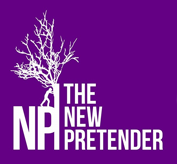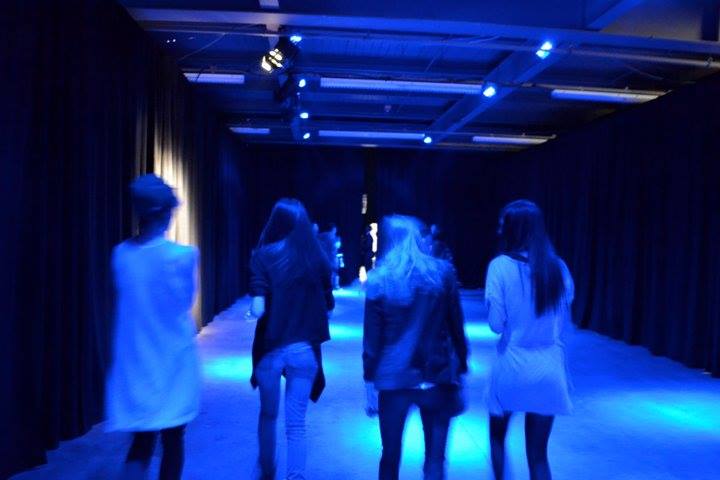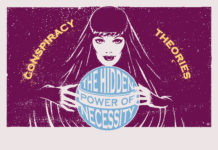Modelling might seem like atypical work, a vocation that doesn’t have a lot in common with more regular jobs. That is the prevalent image of the trade, both inside and out. But with its long-standing entrepreneurial ethos and individual careers that are as evanescent as the fashion cycles, models are in many ways at the forefront of new forms of precarity. This is particularly true when we consider how atomised workers perceive themselves in ways that seem to deny the possibility of collective action.
That said, to talk about modelling in the same terms as we would other types of work would sound the wrong note for working models. When we first sat down in 2013 to plan The Business Model, a website about the modelling industry designed for models, my collaborator Natalia and I spent a lot of time talking about tone. In the years we had been working in the industry there would occasionally be a model who would gain a public platform, give a few interviews or write a confessional editorial about the working conditions or body dysmorphia, and then promptly vanish from industry relevancy. Few could maintain industry support (agency representation and booking jobs) while developing a reputation as an ‘industry-basher’, which was the oft-invoked epithet used by models and agents alike.
The Business Model was designed to be an authentic, interesting and useful resource for working models. We wanted to help the people on the inside make their own lives a little bit better. We were focused on damage control and support, and we didn’t have a political project in mind. Natalia was still working as a model. I had recently retired but never worked well enough to have a real name to cash in on. Industry-bashers were seen as bitter or naive, and if we wanted our publication to be relevant to our audience, we couldn’t be seen in that light.
The model as the neoliberal worker

The mythology of model-as-entrepreneur is a popular one. It’s baked right into the name, The Business Model. It was a name designed to harness exactly the myth that models who treated their jobs like small businesses could take control over their work and life. The name told models that they didn’t have to be the pawns they so often felt like, that they could instead wrestle what power they could from the industry and bend it to their will.
Over the past decade of modelling and then editing The Business Model, I have never been more convinced that this isn’t the case.
Models have much less in common with small business owners than they do with other precarious or unorganized workers, such as freelance journalists, or retail and food service workers. Typically, models are young with limited work experience and come from a wide variety of ethnic, national, and class backgrounds. Professional models, those represented by a legitimate modelling agency, compete against one another for thousands of single jobs every year, one-time contracts with a single employer for as little as a few hours of work at a time. Like other freelancers, their living comes from cobbling together as many of these jobs as time allows. Models also compete against celebrities and Instagram stars and in small, less professionalized markets, hobbyists.
This intense competition to secure jobs means that models often live precariously. Landing a $10,000 job can be a windfall, but after living expenses in Tokyo or New York, flights, visas, clothing, grooming, and fitness costs, as well as a 30–50% commission to their modelling agencies, it’s easy for models to find themselves actually indebted to those agencies.
Until one reaches the incredibly rare ‘supermodel’ position, where many million-dollar contracts are a yearly expectation, models live in precarity — unless they have an independent source of wealth. Because of this precarity, success elects those with the greatest pre-existing life advantages; the rank-and-file of modelling are more diverse in class, race, and body type than the elite group of supers would suggest. White models are not only the preference of employers; they are also, statistically, those most likely to be able to slug it out through years of high-risk, low-wage precarity. This double-ended pressure produces the incredibly homogenous images consumers see.
Models, who by professional definition display the products and ideas of their employer, have traditionally been limited in how they choose to present themselves and interact with the public in their professional capacity. Modelling work is controlled by agencies and clients in almost every way: how to look, walk, talk, shave, shop, eat, exercise, relate to others are all dictated on and off the clock. In this way, modelling work is an explicit distillation of the social controls usually implicitly experienced by workers. Modelling is a quite pure neo-liberal experience. As Wendy Brown points out in Undoing the Demos, individuals ‘are expected to comport themselves in ways that maximize their capital value in the present and enhance their future value […] though practices of entrepreneurialism, self-investment, and/or attracting investors’.
Models don’t typically think of themselves as such, nor do the general public or even labour activists, but models are workers. Due to their public profile and the kinds of products they’re employed to sell, models are thought of as something akin to celebrities. The superficial symbols of wealth (putting on a suit or a designer outfit and receiving praise from editors, designers, and celebrities in a glamorous runway location or online, and being treated to parties and gifts) temporarily provide the illusion of ‘success’. Moreover, models are often paid not in cash, but in ‘trade’, typically clothing or perhaps a handbag. In such cases, employers choose to hire dozens of workers for the cost of their own products, which models effectively advertise by wearing or using them in their highly ‘Instagrammed’ personal life. These ‘perks’ may offer a temporary feeling of approval or success, but they in no way offer greater power over one’s own working life.
Such scraps of luxury aren’t gifts, they are the tacit purchase of a model’s gratitude and loyalty.
Like prestigious internships or start-up cultures, the glamour cachet in modelling distorts the realities of the job, even for those who are right in the thick Never knowing where your next pay cheque will come from and knowing that you will eventually age-out of the job encourages an intensely competitive hoarding mentality. This extreme competition not only becomes the primary way that models experience their relationships with one another, but it also means that there is always a reserve pool of labour for clients to draw from.
Agents, to their credit, always warn new models: don’t get comfortable, you are disposable.
That incessant competition occurs when you treat your self as a product whose value you seek to invest in or maximise. Brown writes that this state turns workers into capital, and “when everything is capital, labour disappears as a category, as does its collective form, class.” Another consequence of moving to considerations of human capital rather than human workers is an illusion of freedom which can be well-evidenced by looking at the way that models are permitted to be political.
It’s now a regular sight to see models engaged in social/political issues, but the majority do so within this prescribed form: individual private or public action, often on social media. From over a decade of agents telling models that their most valuable product is their ‘personality’ (an ineffable asset that most young people struggle to define even when it isn’t the subject of commerce) comes the tyranny of Instagram as product catalogue and trade publication. Even when the subject is radical by the standards of the industry’s recent history, the substance of the action is industry-sanctioned.
Most models have posted on Instagram about climate change or used a feminist hashtag. For decades, celebrity-models have used what voices they’ve had for charitable causes, individually endorsing an NGO or setting up a philanthropic organisation themselves. Doing so is much like any other modelling job, persuading an audience to purchase perfume or shoes or turn off their electricity for an hour. Whereas celebrity-models of the pre-Internet era formally represented large NGOs in campaigns and collaborated on charitable, name-branded products, the insta-models of 2018 voluntarily connect their thousands or millions of followers to a cause in a matter of seconds.
More often than not, models are not formally employed by a charity or organisation to promote their cause, but are moved to share a message by their own passion, much like any other social media user. Some models even venture into more controversial posts, supporting political candidates or explicitly condemning a practice or company. In an era where marches and demonstrations seem to be becoming fairly frequent, it isn’t jarring to see a model holding up a sign or asking followers to contribute to a cause in the way that it would have been in 2013.
The spontaneity and authenticity may be new, but the practice has more in common with the past than we may assume. Both of these types of ‘charity’ or ‘activism’ are done through an industry-approved medium. The average rank-and-file model can virtually yell about the President through Instagram but would not break character during a runway show and do the same. There hasn’t been a Colin Kaepernick at the Victoria’s Secret Fashion Show.
By using a medium like Instagram, ordinary models can ‘speak out’ without disrupting their bosses and threatening their own profit. The modelling industry can sell models that post the odd controversial Instagram caption and, most importantly, models can sell themselves.
A handful of models organise others to participate in marches or workshops about issues within the fashion industry and beyond. Top model Cameron Russell, for example, actively speaks directly to less ‘safe’ topics and about specific actions, strikes, and struggles. Former model Sara Ziff has been a public voice for models on her own and through The Model Alliance (MA), speaking about labour rights and struggle across the fashion supply chain and encouraging models to take advantage of the unprecedented workers’ resources that the MA offers. These women are strategically building up power.
There are few things that modelling, fashion, and advertising industries can’t sell, and they will sell the imagery of #wokeness and activism of the average rank-and-file model so long as the political substance and action thereof do not threaten profit. The political activism that actually does threaten real change to the industry (regulating the work of child models, for example) is so carefully discussed and publicly presented that the most industry can do is hold its tongue. Agencies and powerful clients will publicly applaud this work to appear that they are in on it — that they’re one of the ‘good ones’.
Star model-activists can stand alone. Meanwhile, the legions of regular working models can not hope to replicate it without being labelled industry-bashers and watching their market value shrivel up before their eyes. Just like in many jobs, the capacity to resist is the preserve of only a few; for now, the structure of resistance mirrors the hierarchy.
Changing modelling through worker power, not consumer power

To change modelling work, start with workers’ issues. There are countless issues that concern models, some are specific exploitative practices within the industry (financial mismanagement and clients and agents who are sexual predators), others are highly relevant to the public at large (systemic racism and access to health care). When it comes to a consumer-interest issue like representation, for example, whether we’re looking at ethnicity, sexual orientation, gender identity, class, or body image, there are two ways of approaching the issue: as a labour issue, or as a consumer issue.
We want to see humans that we can relate to in the media and we know that the ubiquity of thinness in the media has harmful health impacts on consumers. As I’ve written elsewhere, thinness is not inherently bad, but it’s over-represented and used to conjure aspiration.
Media consumers who genuinely want change in the images they’re seeing, need to examine the political choices that produce barriers to health and diversity in work and society at large. To see healthier and more diverse images, we need to eliminate those barriers. This includes access to healthcare and the freedom to organise workplaces unintimidated.
Consumer-centred reforms focus on the products of fashion, cosmetics, and advertising industries and so too only the injustices that float to the top. Imposing quotas of what ‘kind’ of people appear in images, for example, may produce some of the desired results for consumers, but the industrial practices that contribute to the production of those images will largely remain unaltered. The financial insecurity and unhealthy demands on workers’ bodies will continue to punish racialised and working class people disproportionately, supplying a workforce that is unhealthy, precarious, and homogenous.
A labour-centred approach to this issue moves the conversation away from any delusion that anyone should or shouldn’t be photographed and instead focuses the conversation on the safety and dignity of the work itself. If workers have power in their workplaces, including financial accountability from their employers and freedom from degrading and unsafe workplace conditions and hiring practices, models from marginalised social statuses will have greater chances of succeeding in the industry without compromising their health and security and those who exit the industry will do so without the burden of deteriorating mental health.
To achieve dignity, models need the organisational capacity and solidarity to withhold labour, bargain collectively and demand safe workplaces. Clients and agents that harass or abuse workers by, for example, withholding payments, need to be convinced that there will be repercussions. These changes will be powered by models standing with each other and with other workers across the supply chain and across industries
As the nature of work changes, more people will find themselves in working conditions similar to those of models: precarious, lacking employment benefits, and operating in seemingly novel situations that make safe and healthy working conditions difficult to ensure. Better conditions start with equal employment opportunities and workplaces, free from harassment and abuse. We could all do with some solidarity.
References
Wendy Brown, Undoing the Demos: Neoliberalism’s Stealth Revolution (Zone Books – MIT Press, 2015).






[…] The New Pretender has published an essay of mine about modelling work, what it teaches us about precarity, and how the industry can change. You can read it here. […]